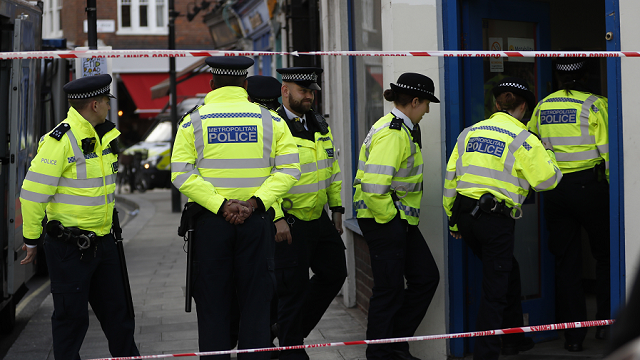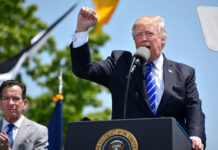
Police in London were searching for the assailant who detonated a homemade bomb Friday that sent a scorching blast of flame and smoke through a London subway car, injuring at least 29 rush-hour commuters and sending panicked crowds scrambling for safety in what police called a terrorist incident.
As of Friday evening, authorities had given no details on possible suspects. Security measures were tightened across London’s vast mass-transit network, and the government described the threat level as critical, meaning another attack could be imminent.
British media reported that the crude device, carried in a bucket and shoved into a shopping bag, had a timer, suggesting that some degree of bombmaking knowledge was employed.
The Islamic State terrorist group claimed responsibility for the explosion on its Amaq news website. Experts cautioned that the group often seeks credit for attacks it may have inspired, as well as ones it had nothing to do with.
The explosion on London’s Tube is bound to rekindle pointed debate about whether countries such as Britain have been tough enough fighting terrorism. Just hours after the blast, President Trump suggested the United Kingdom needed to be “more proactive.” Shortly after, Prime Minister Theresa May retorted that such criticism was not helpful.
“This was a device intended to cause significant harm,” May said, but it remained unclear whether the explosive may have detonated prematurely or malfunctioned at the Parsons Green station, about three miles southwest of central London.
It was not certain whether the suspected bomber was among those hurt or was now the run. In a sign that a manhunt could be mobilized, London police appealed to the public to submit cellphone images taken at the scene. British media said that investigators had closed-circuit television images of a suspect. The homemade device blew up on the inbound train, nine stops from Westminster.
After the attack, Trump tweeted: “Another attack in London by a loser terrorist. These are sick and demented people who were in the sights of Scotland Yard. Must be proactive!”
It was unclear whether Trump had been briefed by his security advisers and knew something of the identity of the assailants. At the time, neither the London police nor the British government had said anything publicly beyond describing the detonation as a suspected terrorist attack.
Following Trump’s tweets, and without mentioning the American president by name, May said it’s not “helpful for anybody to speculate on . . . an ongoing investigation.”
Later, during a brief appearance outside the White House, Trump further hammered a hard-line message, saying: “We have to be very smart and we have to be very, very tough – perhaps we’re not nearly tough enough.”
Shortly after the explosion, the right-wing populist U.K. Independence Party, or UKIP, tweeted, “Thank goodness nobody serious hurt at #ParsonsGreen but we cannot rely on jihadist incompetence.”
Authorities said the 29 injured largely suffered from flash burns. Emergency services said none of those hurt had life-threatening injuries.
“We have hundreds of detectives involved looking at [closed-circuit] TV, forensic work and speaking to witnesses,” said Mark Rowley, head of London’s police counterterrorism unit.
Parsons Green is in Fulham, a neighborhood of Victorian rowhouses and leafy parks, known for its furniture designers and Champions League soccer.
Witnesses described a fireball and smoke racing through the subway car, and then a frantic crush of people trying to flee while others attempted to aid those with burns and other injuries.
In the months since May’s narrow reelection, her government has come up with few new proposals. Cities have invested in erecting barriers or bollards to make it harder for terrorists to attack popular public spaces. Earlier this week, London police deployed for the first time new high-tech nets laced with tungsten-steel spurs that can be placed on roadways and stop marauding vehicles as heavy as a double-decker bus.
“The terrorist threat now includes unsophisticated attacks, such as stabbings and vehicle ramming, where the planning cycle is much shorter than it would otherwise be,” said Rajan Basra, a researcher with the International Center for the Study of Radicalization, at King’s College in London. “This volatility means that the authorities have to intervene a lot earlier.”
Friday’s explosion was the fifth terrorist attack in Britain this year. At least three of the attackers who struck Britain this year were previously known to law enforcement officials. Authorities have acknowledged that it is impossible keep track of all suspects, and it is believed that British security services are constantly monitoring about 500 people. According to European Union officials, the number of Islamist extremists in the country could be up to 50 times that.
On Thursday, Britain’s Home Office announced that police, using broader authorities, had arrested a record 379 people for terrorism-related offenses in the past months, an increase of almost 70 percent.
(c) 2017, The Washington Post · William Booth, Karla Adam, Rick Noack
{Matzav.com}











